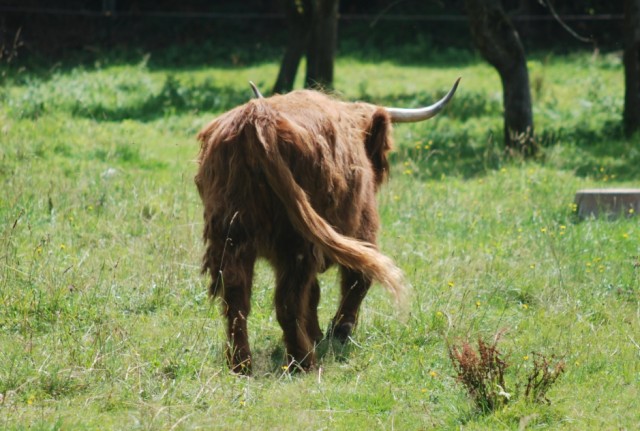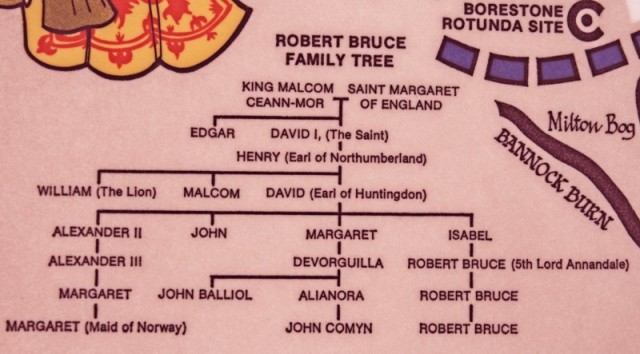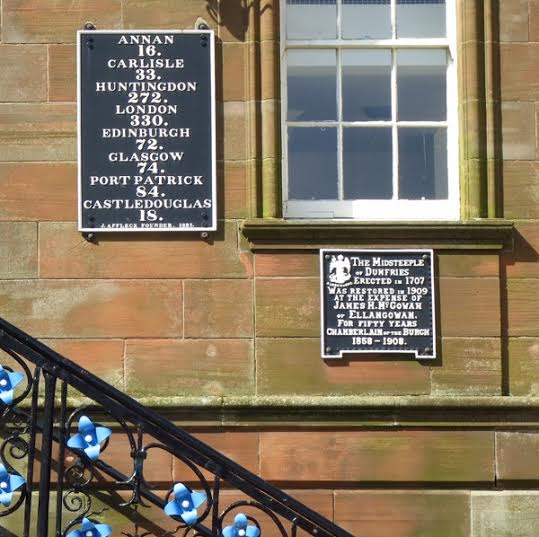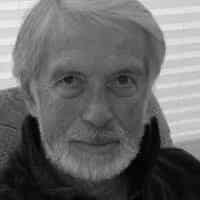As the Referendum reaches a crescendo…

… by Stuart Littlewood
Harking back to when Scottish royals ruled chunks of England
Thanks to Gordon Duff of MacDuff, for Scotland: Vote Yes “Anyway” https://www.veteranstodayarchives.com/2014/09/14/scotland-vote-yes-anyway/ , an entertaining piece mourning his lost heritage in that magical land. Methinks he should have returned to fight the good fight against the spoil-sports of the ‘No’ campaign.
I see that Gordon’s misty-eyed reminiscences started a minor discussion in Comments about the location of Midlothian in relation to Hadrian’s Wall. In olden days Lothian was part of the Kingdom of Northumbria and regarded as English or Scottish at different points in history. At the time of King David I of Scotland (1084-1153) the people of Lothian were known as his English subjects and the River Tweed, some distance north of Hadrian’s Wall, marked Lothian’s southern boundary. I don’t think you’d see any part of Gordon’s ancient county of Midlothian (which had Edinburgh as its ‘capital’) from the Wall.
And speaking of King David…. In my younger days when I lived and worked in Scotland, I was intrigued by an old iron plate fixed to the Midsteeple in Dumfries: “Edinburgh 72, Glasgow 74, London 330… Huntingdon 272”. Why Huntingdon, of all destinations in the south? No-one seemed to know.
Years later I found myself living in ancient Huntingdonshire, now incorporated into Cambridgeshire. Local memory only goes back to the 17th century and the exploits of Cromwell, who went to school in Huntingdon, became its MP and later represented Cambridge.

So what about the old tea tray in my kitchen commemorating the Battle of Bannockburn, 1314 — the date indelibly etched on every Scotsman’s memory when Robert the Bruce trashed the English army and won independence the hard way? It shows the Bruce’s family tree back to King Malcolm and Saint Margaret, and the lineage includes the name ‘David, Earl of Huntingdon. Who was he, and who were all the other earls of Huntingdon? The good folks of Huntingdon didn’t seems to know.
It turns out to be an astonishing list… a rebellious teenager, a Norman crusader, two kings of Scotland and several other members of the royal House of Atholl including, some say, the legendary outlaw Robin Hood.
Waltheof, the Saxon earl of Huntingdon, was beheaded in 1076 for (allegedly) getting mixed up in the Rebellion of the Earls against William the Conqueror. A spooky account tells how the executioner took his swing while Waltheof was still offering up a last prayer. “Lead us not into temptation…” was as far as he got, but onlookers swore they heard the severed head continue: “…and deliver us from evil, amen.”
The son of Earl Siward of Northumbria, Waltheof should have inherited his father’s earldom in 1065, but being only 10 years old he was made earl of just the Middle Anglia part – Huntingdon and Northampton. Northumbria in those days extended a long way south. A mere kid, he probably skipped the Battle of Hastings, which could explain why he escaped the ethnic cleansing that followed as the Norman warlords spread across the country. He later became a resistance leader along with Hereward the Wake, but in the end had to surrender. After behaving himself for a while he was rewarded in 1072 with the whole of Northumbria, although his good fortune was due in large part to having married the Conqueror’s niece Judith. Then came the rebellion. Some say Judith betrayed him, others insist it was a royal ‘stitch-up’ to eliminate the last of the Anglo-Saxon nobility. Anyhow, Judith afterwards controlled the earldom.
The story took a turn for the better when their daughter Maud married one of the Conqueror’s henchmen, Simon de Senlis, son of Ranulf the Rich. When Simon died on crusade in 1111 Maud, although 36 and a single mom, was a very fine catch for somebody. The lucky man was to be King David I of Scotland in a match arranged by the then King of England, Henry I. Their marriage, in 1113, brought David the earldom of Huntingdon.
David at that time “shared” the throne of Scotland with his elder brother Alexander “the Fierce” but was unable to claim his inheritance, the southern half of Scotland. However the brothers were close friends with King Henry, who had married their sister Edith, and young David stayed at the English court learning Norman ways.
He became a travelling justice in Henry’s administration, and his retinue included a group of Norman knights who acted as his enforcers. In 1113, with Henry’s backing, David finally made his claim in Scotland stick. But he continued to spend most of his time in England until brother Alexander died in 1124.
As the new ruler of a united Scotland plus Cumbria, David took his enforcers north with him. They included de Brus (Bruce) and others whose family names would become famous. With the earldoms of Northumbria, Northampton and Huntingdon also in his pocket he remained immensely influential in England.
When Henry I died in 1135 David backed Henry’s daughter Matilda in the civil war against Stephen. She was, after all, his niece and the widow of the Emperor of Germany, whom she had married at the tender age of eight. Family loyalty, however, put David on the losing side and he was defeated at the Battle of the Standard in 1138. But with his army still intact he remained in control of Carlisle where in 1149 he knighted his great-nephew, the future Henry II of England. In return Henry acknowledged Scotland’s continued control over the northern counties of England.
King David, nicknamed “the Saint”, died in 1153 at Carlisle aged 72, a keen gardener to the end. He had outlived Maud who was 13 years his senior, but together they spawned a family that included a remarkable collection of characters. Of their four children one of the boys was strangled at birth by his great-uncle and the other, Henry of Huntingdon, produced 10 offspring including two future kings of Scotland, Malcolm IV and William I “the
Lion”.
Was Robin Hood a ‘Huntingdon’?
Another of Henry of Huntingdon’s sons was David, 3rd Earl of Huntingdon, a younger brother to Malcolm IV and William I. He was also Earl of Northumbria, Carlisle, Doncaster and Cambridge. With his wife Matilda de Kevelioc he too produced a prodigious number of children. The eldest of these, Robert Huntingdon, was mysteriously airbrushed from official history and “died young”, leaving some historians to speculate that this was the disinherited outlaw Robin Hood.

Ripping yarns often refer to Robin as the Earl of Huntingdon, but the truth is still a puzzle. However, if Robin led the resistance against Prince John during Richard the Lionheart’s absence on crusade – 1190 to 1194 – he must have been born no later than c1170. Earl David was 26 in 1170 so the timeline allows for Robin to have been his son, but not a product of the marriage bed. He didn’t wed Matilda until 1190.
The castle and southern powerbase demolished
Huntingdon Castle, rebuilt by William the Conqueror in 1068, was enlarged by David and Maud, who, we may suppose, were seen there from time to time until 1124 when David’s new responsibilities took them to Scotland. The castle was dismantled in 1174 by a furious Henry II after the revolt against him by his own family. Huntingdon had passed to David the 3rd Earl after William the Lion (his brother) ascended the Scottish throne in 1165, but the castle was still held at the time by William, who had unwisely sided with the rebels. William was already in dispute with Henry over the earldom of Northumbria and as one of the leaders of an armed rebellion he was made to pay dearly.
When David died in 1219 the earldom passed to his son John then reverted to the English crown in 1237. An important powerbase was removed. So ended the remarkable Scottish influence in the south. Earl David and other members of the family are said to be buried at Saltre Abbey (present-day Sawtry, just north of Huntingdon), founded in 1147 by Simon de Senlis the younger, Maud’s son from her earlier marriage.
But that’s only the start of the story. The Huntingdon brood continued to make history hundreds of miles to the north. In 1290, when the legitimate line of William the Lion petered out, Earl David’s descendants were prime candidates for the Scottish throne.
One of his girls, Isobel of Huntingdon, married the 4th Lord of Annandale. Their grandson became King Robert I (Robert the Bruce).
One of his grand-daughters, Devorguilla Princess of Galloway, married John Balliol, founder of Balliol College, Oxford. This Balliol is not to be confused with their son, the younger John Balliol, who became King of Scotland in 1292 after a contest with 12 other claimants. Balliol’s claim was through Devorguilla, the daughter of Margaret of Huntingdon, Earl David’s eldest daughter. The other leading contender, de Brus (Bruce), 6th Lord of Annandale, was the son of Isobel, the second daughter of Earl David. He was one generation older and therefore “closer”.
In tricky situations like this it was customary to invite a foreign king to choose. The notorious bully Edward “Longshanks”, King of England, was eager for supreme lordship over Scotland and seized his chance. He selected Balliol, then proceeded to make his life a misery… so much so that Balliol resigned the crown in 1296 and was locked in the Tower for his insolence. Scotland was again without a king and menaced by the English. The bloody struggle for independence began led by William Wallace, as “Braveheart” audiences will remember.
In 1306, to make absolutely certain of the crown that should have been his father’s, the 7th Lord of Annandale, aka Robert the Bruce, murdered his rival the Red Comyn, Guardian of Scotland, on the altar steps of Greyfriars Church in Dumfries, an offence for which he was excommunicated. But within weeks he was crowned King Robert I.
So enraged were Longshanks and Bruce’s enemies, the Comyns and the Balliols, that Bruce was forced into hiding in the wilds of Galloway and his family made to suffer – the men were executed and the ladies “caged”. Nearly every man’s hand was against him. How this great-great-grandson of David and Maud, with a small band of followers, turned the tables and ultimately triumphed at Bannockburn is the stuff of legend.
At least Scotland’s latest bid for freedom – or independence as some call it – is being made without battle-axe and longbow. If I were still living there my heart would say ‘Yes’ for independence and a total break from the political sewer that is Westminster, pinning all hopes on a cleaner, more focused government in Edinburgh. But I doubt if they can really afford to leave the rotten, cankered Union ‘family’ and pursue their dream.
Returning to that mysterious Midsteeple milepost, I came across a milestone on an ancient drovers’ road in the hills of Galloway, also pointing to Huntingdon 300-odd miles away. A possible explanation is that the mid-Anglian town was a major destination for cattle drives from the north, perhaps stretching back to medieval times, and Huntingdon might well have been the Dodge City of those days – a wide open, rip-roaring cow town.
We know that vast herds were rested and fattened on the lush meadows nearby before meeting buyers up from London. What with huge landholdings north and south of the border, the earls of Huntingdon would almost certainly have been cattle barons perhaps using their Huntingdon outpost to push northern beef into the rich markets of the south.
Things turned sour between England and Scotland after 1286 and drovers from the north would have found the journey south difficult and dangerous. Later, in the period 1500 to 1603 (the union of the crowns), no herd was safe from the notorious Border Reivers who raided across the ‘debatable lands’ between Scotland and England.
The biggest cattle drives were probably seen after 1603 until the arrival of the railways in the mid-1800s. Unfortunately the cattle trade wasn’t a fixed and settled business with permanent buildings, so no records survive.

After working on jet fighters in the RAF Stuart became an industrial marketing specialist with manufacturing companies and consultancy firms. He also “indulged himself” as a newspaper columnist. In politics, he served as a Cambridgeshire county councilor and member of the Police Authority. Now retired he campaigns on various issues and contributes to several online news & opinion sites. An Associate of the Royal Photographic Society, he has produced two photo-documentary books – Paperturn-view.com.
Also, check out Stuart’s book Radio Free Palestine, with Foreword by Jeff Halper. It tells the plight of the Palestinians under brutal occupation and explains to me why the Zionists who control Israel should be brought before the International Criminal Court.
Stuart’s Very Latest Articles: 2023 – Present
ATTENTION READERS
We See The World From All Sides and Want YOU To Be Fully InformedIn fact, intentional disinformation is a disgraceful scourge in media today. So to assuage any possible errant incorrect information posted herein, we strongly encourage you to seek corroboration from other non-VT sources before forming an educated opinion.
About VT - Policies & Disclosures - Comment Policy



